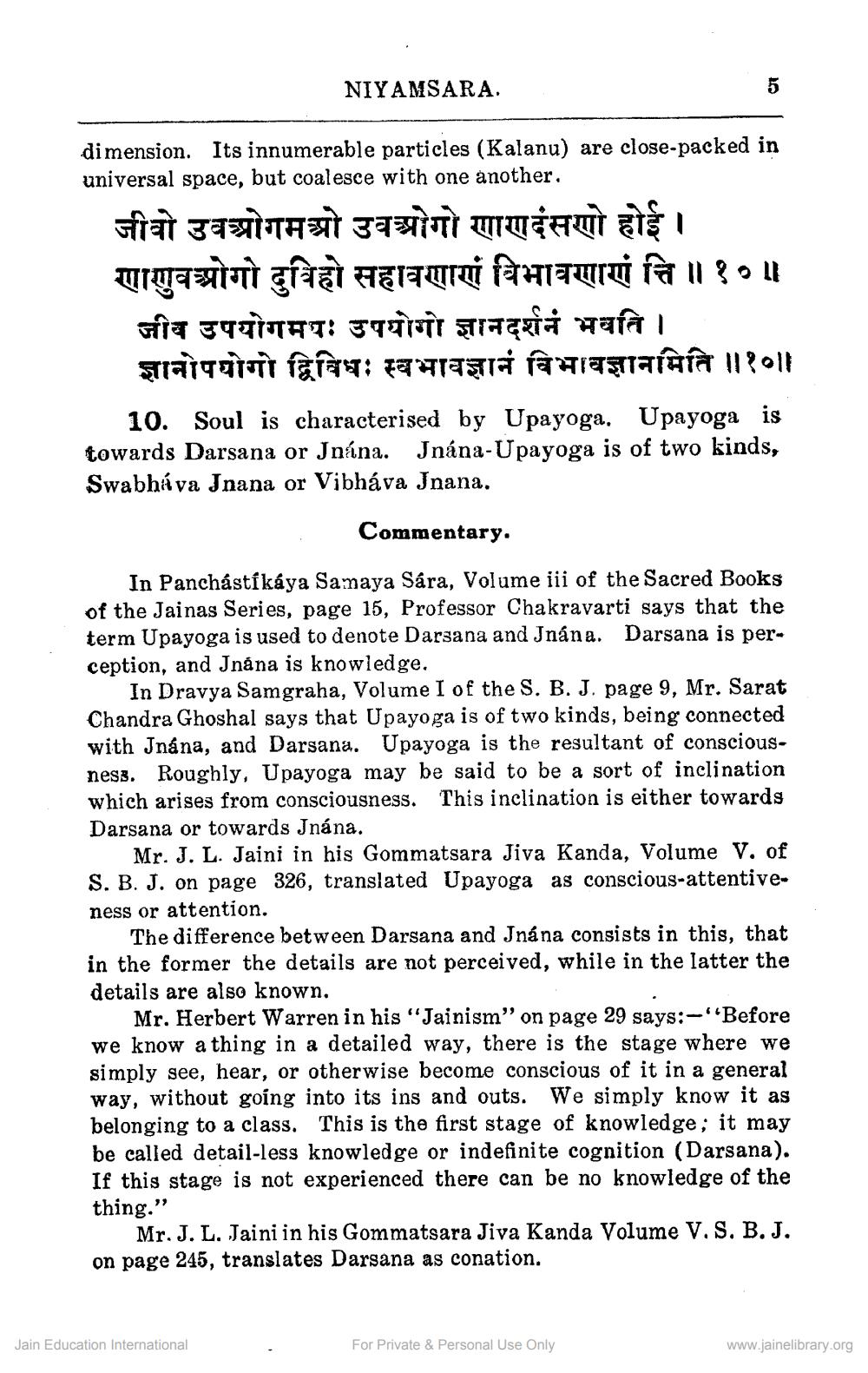________________
NIYAMSARA.
dimension. Its innumerable particles (Kalanu) are close-packed in universal space, but coalesce with one another.
जीवो उवोगमओ उवओगो णाणदंसणो होई। णाणुवओगो दुविहो सहावणाणं विभावणाणं त्ति ॥१०॥ जीव उपयोगमयः उपयोगो ज्ञानदर्शनं भवति । ज्ञानोपयोगो द्विविधः स्वभावज्ञानं विभावज्ञानमिति ॥१०॥
10. Soul is characterised by Upayoga. Upayoga is towards Darsana or Jnána. Jnána-Upayoga is of two kinds, Swabháva Jnana or Vibháva Jnana.
Commentary.
In Panchástíkaya Samaya Sára, Volume iii of the Sacred Books of the Jainas Series, page 15, Professor Chakravarti says that the term Upayoga is used to denote Darsana and Jnana. Darsana is perception, and Jnána is knowledge.
In Dravya Samgraha, Volume I of the S. B. J. page 9, Mr. Sarat Chandra Ghoshal says that Upayoga is of two kinds, being connected with Jnána, and Darsana. Upayoga is the resultant of consciousness. Roughly, Upayoga may be said to be a sort of inclination which arises from consciousness. This inclination is either towards Darsana or towards Jnána.
Mr. J. L. Jaini in his Gommatsara Jiva Kanda, Volume V. of S. B. J. on page 326, translated Upayoga as conscious-attentiveness or attention.
The difference between Darsana and Jnana consists in this, that in the former the details are not perceived, while in the latter the details are also known.
Mr. Herbert Warren in his "Jainism" on page 29 says:-'Before we know a thing in a detailed way, there is the stage where we simply see, hear, or otherwise become conscious of it in a general way, without going into its ins and outs. We simply know it as belonging to a class. This is the first stage of knowledge; it may be called detail-less knowledge or indefinite cognition (Darsana). If this stage is not experienced there can be no knowledge of the thing."
Mr.J. L. Jaini in his Gommatsara Jiva Kanda Volume V. S. B.J. on page 245, translates Darsana as conation.
Jain Education International
For Private & Personal Use Only
www.jainelibrary.org




